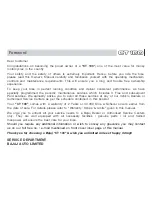
20
a
b
c
d
Align the saddle with the frame by using the saddle nose
and the bottom bracket shell or top tube as a reference
point
(a)
.
Clamp the seat post tight again by closing the quick-re-
lease, as described in chapter “How to use quick releas-
es and thru axles” or by turning the seat post binder
bolts clockwise in half turns
(b)
. You should not need
much strength in your hands to clamp the seat post suf-
ficiently tight. Otherwise the seat post does not match
the frame.
Verify in between that the seat post is sufficiently tight
by taking hold of the saddle at both ends and then trying
to rotate the seat post inside the seat tube
(c)
. If it does
rotate, gently retighten the binder bolt of the seat post
clamp by half a turn and do the check again.
Does the leg stretch test now produce the correct re-
sult? Check by moving your foot and pedal to the lowest
point. When the ball of your foot is exactly above the
pedal center in the ideal pedaling position, your knee
should be slightly bent. If this is the case, the saddle
height is adjusted to the correct height.
Check whether you can touch the ground safely while
sitting on the saddle by stretching your feet to the floor. If
not, you should lower the saddle until you can, at least
to begin with.
G
Never apply grease or oil into a seat tube of a
frame made of carbon unless an alloy sleeve
is inside the frame. If you mount a carbon
seat post, do not put any grease on it, even if the frame
is made of metal. Once greased, carbon components
may never again ensure reliable clamping! Use special
carbon assembly paste instead.
G
When riding steep downhill courses on your
MERIDA mountain bike, a lower saddle
height is often better for some riding maneu-
vers. This allows a better control of the MERIDA bike.
G
Make sure not to overtighten the binder bolt
of the seat post clamp. Otherwise you may
damage the seat post or the frame. Risk of
an accident!
G
Never ride your bike with the seat post drawn
out beyond the limit, maximum or stop mark
(d)
! The seat post might break or cause se-
vere damage to the frame. In the case of frames with
seat tubes that extend beyond the top of the frame’s top
tube the seat post should be inserted into the seat tube
at least below the bottom of the top tube and below
the top of the rear stays! If seat post and frame require
different minimum insertion depths, you should opt for
the deeper insertion depth.
Summary of Contents for EN 14764
Page 55: ...MERIDA com...
















































